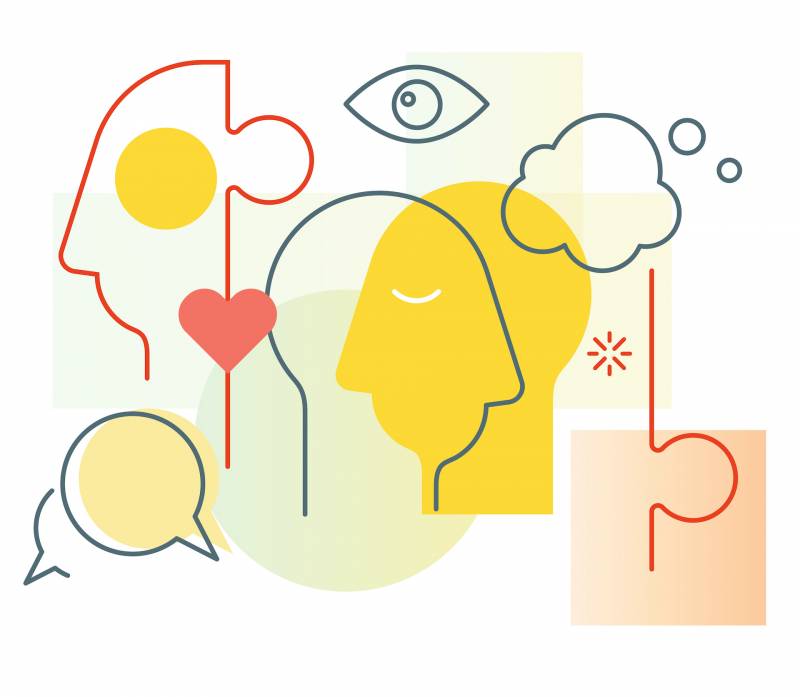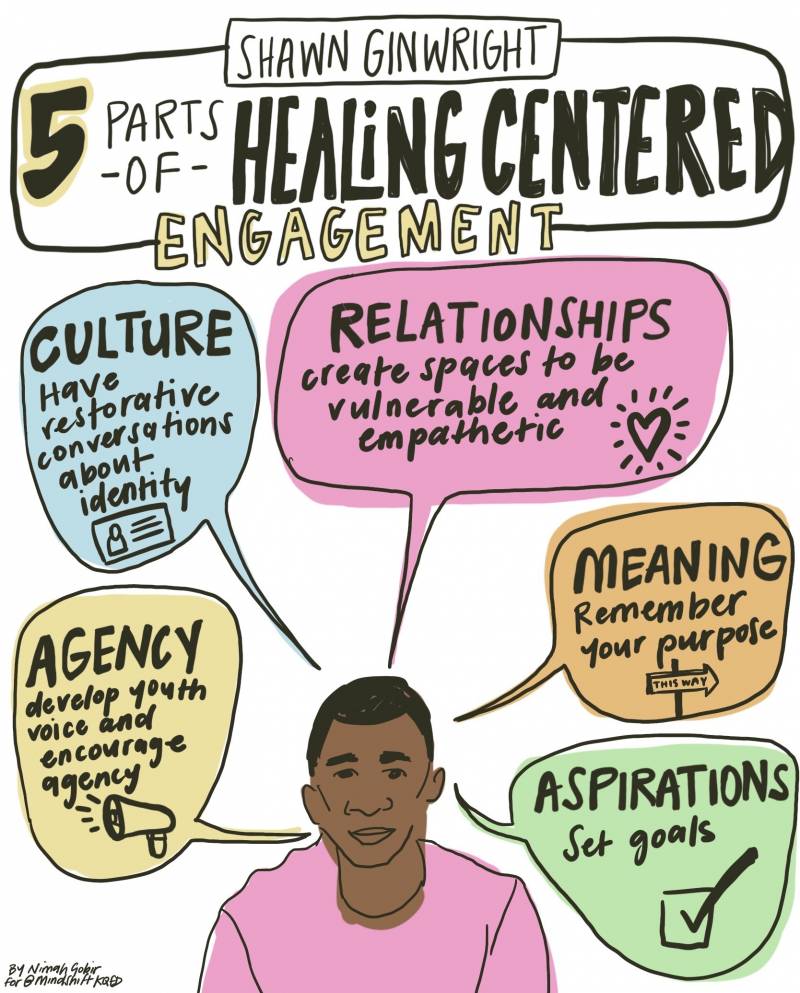This blog offers information, and connections to nurture recent graduates. We welcome your participation on this and on our Facebook Page. The NTC continues to be deeply grateful to MEDITECH for its long history of support for this program. Over the years, MEDITECH has made it possible for the New Teacher Community to serve a vital role in helping our graduates to persist in a challenging, yet deeply rewarding profession.
Monday, April 11, 2022
Sunday, April 3, 2022
Classroom Management Tips for New Teachers, From a New Teacher
From: https://www.edutopia.org/article/classroom-management-tips-new-teachers-new-teacher?fbclid=IwAR1x2u2KGSUGXxVsZLilFel6BY19eLz9OzaxLBezuaG6CY2aj3GIDIoFi5w
Classroom Management Tips for New Teachers, From a New Teacher
A first-year elementary teacher transformed her classroom with a focus on social and emotional learning—and a little help from Penny the Positivity Penguin.

Earlier this year, I was monitoring the hallway as students switched classes after lunch. The boys in the bathroom were making a slight ruckus, but it wasn’t out of hand (yet).
Another student came to stand next to me, asking “Ms. McErlain?” as she tried to get my attention.
“What’s up?” I asked, barely glancing at her, mostly keeping an eye on the boys’ bathroom.
The student was silent, so I finally turned my attention to her.
“Something happened in the cafeteria,” she said, as the tears started rolling down her face. “Everyone surrounded me and called me names.” I asked if it was OK to give her a hug as I requested support from my administration and school counselor.
When I finally finished teaching that day, I went home discouraged. I realized that my classroom wasn’t the happy place I wanted it to be. As a first-year teacher of fourth grade, I had entered the workforce with rose-colored glasses and big dreams of impacting the lives of my students—but I had no idea how to really change their lives. While my college professors preached meeting Maslow’s hierarchy of needs before teaching Bloom’s taxonomy, I didn’t know specific and practical ways to build relationships and community. That night, I came up with four immediate ways I could change the climate of my classroom by prioritizing social and emotional learning.

Your Weekly Eureka Moment
Subscribe to the Edutopia Weekly newsletter—full of innovative teaching and learning strategies that will work with your students. Get articles recommended for you.
Subscribe now4 IDEAS THAT ARE WORKING FOR ME
1. Soft starts: Traditionally, when students arrived in the morning, they were expected to get straight to academic work. In my first semester, I noticed that my students were off-task, ignoring their morning work and acting out. I saw that they needed a space for connection before starting their day.
Now, when you walk into my classroom in the morning, you hear students quietly chatting and music playing for the first 20 minutes. I create a weekly choice board that includes drawing, reading, and writing prompts to ease students into the day. The entire vibe of the classroom has shifted from chaotic, restless energy to a calm environment, where students get what they need to start their day off right.

2. A good friend for the whole class: As I was brainstorming ways to change my classroom environment, I found a stuffed animal that I spontaneously named Penny the Positivity Penguin. I brought her in on a whim, and was astonished to see Penny’s impact. Although the childhood magic of stuffed animals has somewhat faded by fourth grade, Penny has become part of the class. We write her letters, and she responds. She tries to write neatly, even though it’s difficult to hold a pen with her wings. When students are working hard, she hops up to their desk to observe more closely. She’s become a positive role model.
3. Community circle: Community circle is one of my favorite things (and my students love it too). I started holding a community circle because I noticed the negative ways my students talked to each other. We needed to practice respectful language. At the beginning of class, students meet on the floor in a circle for 10 minutes. Every day, we go over our community circle guidelines. We use Penny the Positivity Penguin as our talking device to help regulate turn taking.
Here are our guidelines:
- We respect each other by not talking when someone else is holding the penguin and by looking at the person who is talking.
- We respect ourselves by waiting for others’ attention and by speaking loudly, because our words matter and others deserve to hear our ideas.
- We respect Penny, because she is a penguin and she doesn’t know how to fly, so we’re going to gently pass her and never throw her through the air.
Next, we greet the person sitting next to us. This changes daily. Sometimes we say, “Hola, Hannah.” Other days, we use compliments like “You are so smart, Daniel.” We try greetings in languages related to our students’ cultures or languages they’d like to learn. Then, we answer a funny question, like “What kind of superpower do you wish you had?” We usually end with a more serious question, such as “What’s something you admire about the person next to you?”
4. Quick check-ins: I started creating Google Forms to check in with my students. I post these forms at least twice a week, with an emotion check-in and then an open-ended question, such as, “Which three words best describe you? What’s something that’s really difficult for you? Anything else I should know?” Then I say, “I’m always here for you. If you need a hug, I’m here. If you need to share something (whether it’s your feelings or a silly fun fact), I’d love to hear.”
These check-ins have also become a place where students can tell me about their genuine selves. When a student used the Google Form to share that they were worried about the war in Ukraine, I realized that I wanted to work harder at creating a relationship with my quieter, more reserved students. I hate that it took me until February to learn that one of my students loves playing piano. Another student described himself as stupid, and I realized that this brilliant kid has low self-esteem. I’ve learned so much about my students through these simple check-ins.
There are a variety of classroom management strategies that can help first-year teachers find their footing. However, these are the four that have significantly altered my students’ attitudes and openness toward me. I had to discover my own ways to connect with students beyond what was taught in my education classes. I wish I had started building these relationships sooner, especially as I discover more and more of my students’ interests and challenges. If you’re in the same spot I was, it’s not too late: Find your own Penny the Positivity Penguin and use her as a springboard to transform your classroom culture.
5 Strategies for Developing a School Wide Culture of Healing: Mind/Shift
From: https://www.kqed.org/mindshift/59008/5-strategies-for-developing-a-school-wide-culture-of-healing?fbclid=IwAR2dSPAE_nFlHpanMIwSKLDst0bPH01a-ih88MCcbQwQnUmYJ_Vy-fRmdCM

If a child goes to the doctor because they have a tummy ache and they throw up on their doctor, the doctor doesn’t say, “This kid needs discipline!” The doctor asks questions. “What did they eat? Do they have a fever? They get curious about what's toxic in that child's system so that they can most appropriately treat it,” said Dr. Shawn Ginwright, founder of Flourish Agenda and professor of education at San Francisco State University. The same goes for when children who have experienced trauma act out. “They emotionally throw up on teachers,” he said. “That means schools need to have a wider array of tools.”
Social-emotional learning practices are just some of the tools making their way into more classrooms to help students manage trauma and relationships during pandemic schooling. Even so, the general understanding of trauma – and therefore the responses to trauma – is often limited. “While the term ‘trauma-informed care’ is important, it is incomplete,” wrote Ginwright. One of its shortcomings is that it leads people to think of trauma as only an individual experience instead of thinking about it in terms of systems or contexts. “We need to have a broader perspective of how the environment – where young people live and play – can be traumatizing,” said Ginwright. Another way many trauma-informed models fall short is that they are often deficit-based and focus on what is going wrong in a child’s life rather than looking at areas of possibility.
To respond to the broader conditions of trauma, Ginwright developed healing-centered engagement (HCE), a strength-based social-emotional learning strategy for educators and caregivers. A healing-centered approach to addressing trauma requires a shift from asking a person, “What happened to you?” and instead asks, “What’s right with you?” Based on Ginwright’s research with young people and families for over 30 years in the San Francisco Bay Area, the healing-centered engagement model builds on trauma-informed care by focusing on development across five key principles: culture, agency, relationships, meaning and aspirations.
Culture
Racism, classism and discrimination based on sexual orientation and immigration status can be stressors for young people and their families. “[Identity] is oftentimes the first area of harm that young people experience,” Ginwright said. However, healing-centered engagement focuses on culture and identity as pathways to healing. “We need to engage in restorative conversations about various types of identities that young people bring into our community programs or schools,” said Ginwright.
For example, many students of color are told that they need to work twice as hard as their white peers, which may lead to stress, shame and anxiety. Instead of reinforcing the idea that students of color can’t be their authentic selves, schools may find it helpful to explore self reflection as a healing practice. They can set aside time for students to answer questions like, “How has your connection to a community or identity helped you through a hard time?” or “What are some healing practices rooted in an identity or community you belong to?” Strengthening introspection not only fosters healing, but leads to better decision making abilities and healthier relationships, said Ginwright.
Agency
Focusing on agency, youth voice and specific actions develops students' ability to respond to traumatic environments. “Research shows that when we engage in action or some form of improving a problem, we find that action in and of itself facilitates a sense of well-being,” said Ginwright. Whether it's making meaningful changes in their neighborhood or school, agency cultivates a sense of purpose and collective engagement. “We can act and respond in productive and collective ways to improve the environment where we live, work and play,” said Ginwright. “It provides us with a sense of control over what may be perceived as an uncontrollable situation.”
When supporting students, Ginwright encourages educators to ask themselves, “How do we create strategies that allow for our young people to move out of trauma and into transformation?” For instance, ongoing systemic racism compounded the experience of COVID-19 and created stress and trauma among Black students. Many students felt helpless after George Floyd’s murder in 2020 and it prompted teachers to make space for students to talk about how they were feeling and the changes they’d like to see in their community. Ultimately many students were inspired to take action from protesting police presence in schools to organizing neighborhood cleanups.
Keeping up with constantly changing COVID-19 safety guidelines meant that students and educators alike felt like things were out of their control. “Even as leaders, you sometimes felt incompetent through all of this because you thought you understood what you were supposed to do and then you would do it only to find out the next day that it was something different,” said Dr. Sheila McCabe, assistant superintendent of educational services with the Fairfield-Suisun Unified School District in California. While those in the district couldn’t have control over the big picture, they found opportunities to exercise agency. Identifying and creating district-wide goals helped many people feel like they had a little bit of influence over their environment.
Transactional or Transformative Relationships
In school settings, according to Ginwright, relationships fall into two categories: transactional or transformative.
Transactional relationships are related to the title or status a person has. For example, being a principal isn’t void of power dynamics with regards to staff. “Transactional relationships are effective and efficient relationships, but they're not sufficient for healing,” said Ginwright. “Transactional relationships are easy to break because they are not about people. They’re about titles.”
Transformative relationships, however, may require adults to learn how to be more vulnerable with each other and in turn cultivate a safe environment for students . Transformative relationships, he said, are built on pieces of our humanity. “And when we let our humanity spill out on each other, we create a bond that matters.”
At Fairfield-Suisun Unified School District, administrators are using HCE to take steps in addressing chronic absenteeism with their students.
Assistant superintendent McCabe said reaching out to students to learn more about why they aren’t able to show up to school revealed that many chronically absent students live in low income parts of the district and are more likely to experience persistent stress. “We think that part of [the solution] is really developing strategies to build authentic connection with our students and their parents and through those authentic connections help to reengage kids,” said McCabe. One strategy the district has used to create more transformative relationships is doing a check-in at the beginning of conversations with students. “The questions might be something like, ‘Share with the group the best thing that has happened this week’ or ‘What are you most proud of,’” said McCabe. “We are a few months into really using this technique and staff members have shared that they feel like their conversations, even those that might be challenging conversations, are more meaningful and more productive.”
In McCabe’s district, they aren’t just strengthening relationships in the classroom. They’re building rapport among staff too. McCabe said her colleagues start every meeting by grounding the team with a breathing exercise. “It would take maybe three minutes of a one-hour meeting, but every time I’m like ‘Okay, I’m here.'”
Meaning
Being caught up in the daily grind can make people who work with kids lose sight of why they engage in this work in the first place, which is to build community, facilitate healing and wellbeing, and support young people in the restoration of their humanity. “We have to remind ourselves of the purpose that we're engaged in when we are working with young people. We also have to remind young people of the broader, bigger, deeper purpose of their engagement.” Ginwright said, upholding the meaning in healing-centered engagement simply means that there is ongoing focus on the things that matter.
Aspirations
COVID has made being a teacher and being a student incredibly difficult. However, it’s just as important to continue to envision a possible future, said Ginwright.
“We know that schools are way more than knowledge exchange and acquisition. Schools are social emotional spaces,” he said. “So when we address the trauma and we create healing environments, then it means we get to the deep learning that young people so need and want.”

